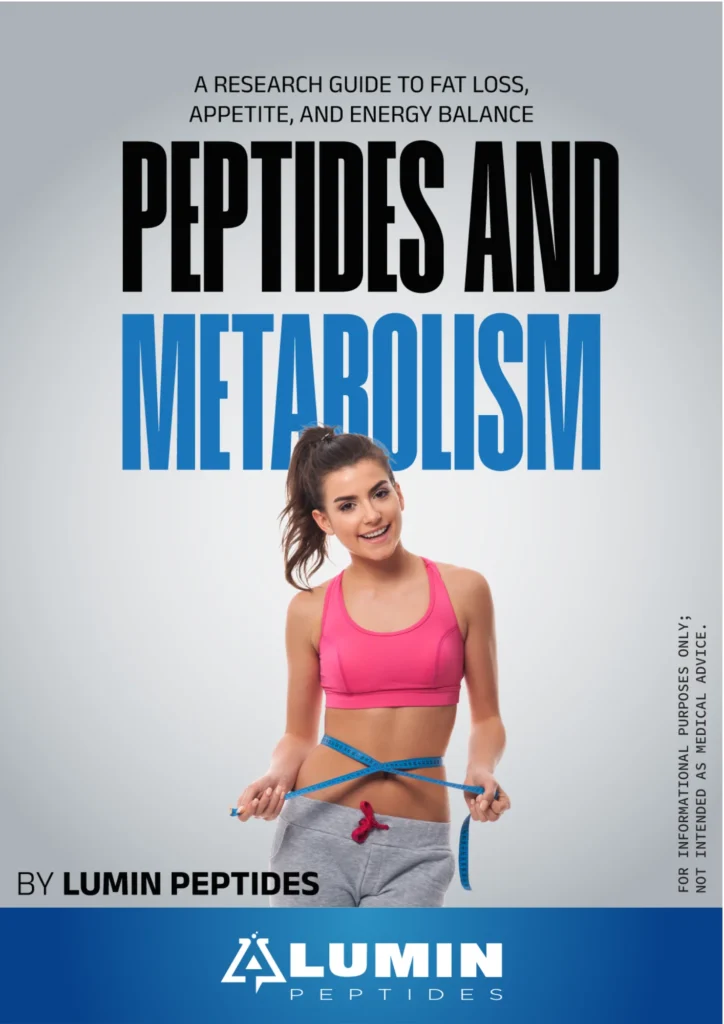Peptides & Metabolism
Beginner’s Guide to GLP-1s, Dual Agonists & Appetite Pathways
New to peptides and curious about how compounds like Semaglutide, Tirzepatide, or Cagrilintide are explored in research?
This beginner-friendly guide was designed to demystify the growing world of metabolic peptide research. From appetite suppression to glucose regulation, peptides targeting the GLP-1, GIP, amylin, and glucagon pathways have become some of the most studied tools in labs investigating weight, digestion, and energy balance.
Inside, you’ll find clear explanations, easy-to-follow dosing logic, and step-by-step protocol examples—all framed for those with little to no prior experience. Whether you’re planning your first protocol or comparing GLP-1 peptide options, this guide gives you the structure and clarity to move forward confidently.
What You’ll Discover Inside:
- What metabolic peptides are and how they work in preclinical studies
- Visual walkthroughs of dosing strategies and reconstitution tips
- Common titration schedules: 0.25 mg to 2.4 mg over 8–16 weeks
- Unit-to-mg conversion tables for insulin syringe use
- How researchers reduce nausea and reflux during dosing phases
- Meal timing and dietary support tips used in metabolic research models
- How long peptides like Semaglutide stay active in lab organisms
- Stacking strategies: Can you combine GLP-1 + Cagrilintide?
Peptides Covered in This Guide:
Semaglutide
A GLP-1 receptor agonist studied for appetite signaling, caloric intake reduction, and blood sugar control.
– Weekly vs. daily dosing logic
– SubQ injection timing in preclinical work
– 0.25 mg → 2.4 mg titration maps
– When nausea most often appears and how protocols adapt
Tirzepatide
A dual GLP-1/GIP agonist researched for enhanced insulin sensitivity, body fat reduction, and energy balance.
– How GIP may enhance GLP-1 action
– Preclinical results showing fat loss and improved satiety
– Titration schedules and reconstitution examples
– Common protocol adjustments after week 8 or 12
Cagrilintide
An amylin analog often stacked with GLP-1s to support:
– Stomach emptying delay
– Fat oxidation
– Prolonged satiety effects
Retatrutide
A newer triple agonist (GLP-1, GIP, glucagon) shown to influence:
– Energy expenditure
– Fat oxidation via glucagon activity
– Brown fat activation in early-stage studies

⚠️ Lab Use Only. Research-Backed Only.
This guide is for educational and research purposes only. Peptides mentioned are not FDA-approved for human use. Dosing protocols and stack suggestions are based on laboratory model studies and preclinical research only.
Ready to Explore Metabolic Peptides?
Whether you’re building a GLP-1 stack or comparing protocols across new-generation agonists, this guide brings clarity to one of the fastest-evolving areas of peptide science.
Download Peptides & Metabolism today and explore more tools in our Peptide Research Knowledge Base: Peptide Research Knowledge Base

